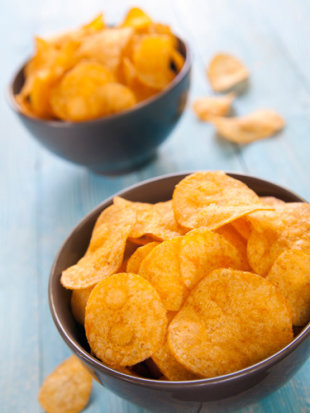Fitness starts with a solid core. Just ask Bicycle magazine's writier, Selene Yeager. The "Fit Chick" columnist is an American Council on Exercise certified trainer, the author of "Ride Your Way Lean," and incredibly active by most standards. However, like many of us, Yeager also spends considerable time behind a desk. And it's there, working on the computer or talking on the phone with clients and colleagues that we fall into a serious fitness trap: inertia.
"That's a huge problem right now. A lot of people think that, in itself, is what's causing so much of the obesity, health and metabolic problems we have," she said. "Say, you go to the gym in the morning, and run for 30 minutes, and then yousit for nine hours. That one burstof activity doesn't undo the damage of such a prolonged stretch of being sedentary."
Avoiding inactivity is especially inportant for you core. If you sit up straight in your chair, with your feet flat on the floor, you're more likely to engage your abdominal muscles. But if you slouch -- and let your skeletal system support your body weight -- you can go the entire workday without firing up your metabolism. Here are five great ways to get a quick core workout while at work, recommended by active people, including Yeager.
1. Core Leg Lift
Office work often resembles Sir Isaac Newton's First Law of Motion: An object at rest will remain at rest until acted upon by an external force.
One of Yeager's favorite office exercises is the core leg lift, which works the deep abdominal muscles, the quadriceps and the hip flexors. To try it:
- Sit up tall in your seat. Contract your abs and lift one foot off the floor aboutsix inches, so the knee comes straight up with the foot directly underneath (maintaining a 90-degree bend in the knee).
- Hold for 10 seconds and slowly lower it while relaxing your abs.
- Repeat with the opposite leg.
- Alternate throughout the exercise.
2. Chair Suitcase
The chair suitcase exercise targets all the main abdominal muscles except the obliques. You'll need to:
- Sit on the edge of the chair seat and lean back until your upper back touches the back of the chair. Tuck your tailbone under, and hold onto the arms of the chair for support.
- Bring your knees up -- with yourshins parallel to the floor -- so that your torso and thighs make an "open suitcase."
- Close the "suitcase" by bringing your chest and knees toward one another.
- Open and close for 10 to 20 repetitions, two to three sets.
You never want to arch your back, as soon as your back begins to arch, it means you need to take a break.
3. Wall Push-ups
Forget expensive exercise equipment and fussy props. a Wall is all you need for thisexercise. Doing a push-up against the wall is notas hard as a regular push-up, but it still gives your biceps, triceps and pectorals alittle workout. Contracting your abdominals and back muscles during the exercise helps strengthen your core muscles.
To make the push-ups harder, move your feet farther away from the wall, or do them on the edge of your desk.
- Stand facing the wall, feet shoulder-width apart and about one foot (0.3 meter) from the wall.
- Place your palms on the wall at about shoulder height.
- Keeping your legs and back straight, bend your elbows and lean toward the wall as far as possible.
- Push yourself away from thewall to the starting position.
- Repeat 10 to 20 times.
Having strong abdominal muscles isn't just about looking good at the beach. There's a reason why your abs are referred to as "core" muscles. They're the fulcrum around which your body works. they help you sit up, bend over, liftyour legs and twist your body.
At the office, all these functions are crucial. Without them, you couldn't bend over to pick up a paper clip from the floor or twist in your chair to pull a file from the drawer. Most importantly, your abs hold you upright in a sitting position. Without them, you'd have to be strapped into your chair or you'd slump over onto your desk. So take good care of them by doing these ab curls once a day.
- Sit up straight in a stable chair without wheels. Contract your abdominal muscles.
- Cross your arms over your chest and curl forward.
- Hold for 3 seconds.
- Repeat 10 to 20 times.
The shoulders are the part of the body where most people holdall their tension. For some reason, we think that the tighter we hold these muscles, the faster we'll work. Unfortunately, holding the shoulders in one position for a long time can compress nerves and impair circulation.
This exercise strengthens and loosens these muscles, all the better to hold up that hard-working noggin. Add some weight by holding a full water bottle in each hand, or use small hand weights. This exercise works best in a chair that has no armrests.
- Sit up in your chair, back straight and abdominal muscles contracted.
- Lift your arms out to the sides until they're parallel to the floor. Hold for 3 seconds. Lower arms.
- Lift your arms out to the front until they're parallel to the floor. Hold for 3 seconds. Lower arms.
- Repeat eight to 10 times.










